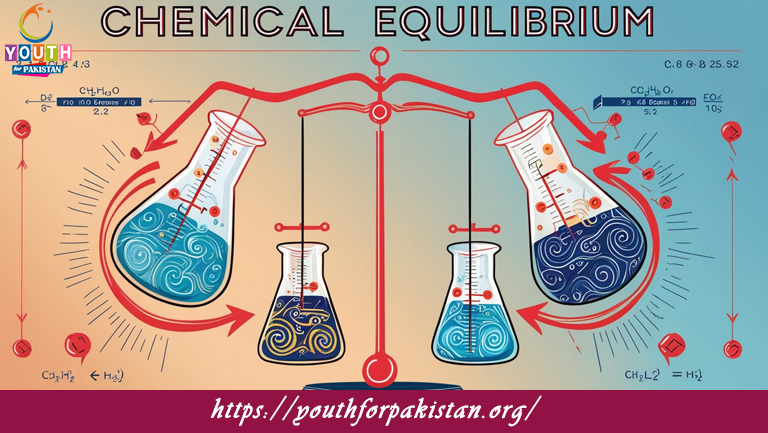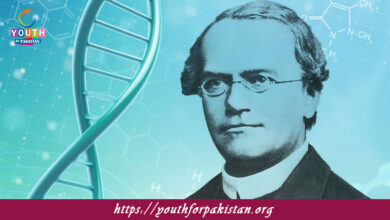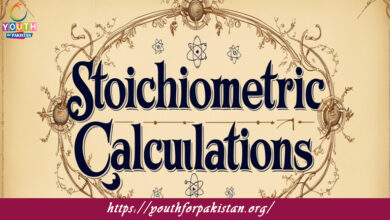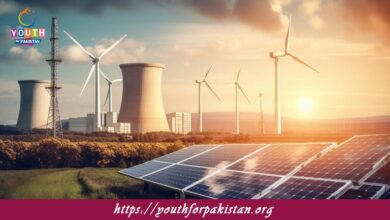State Of Chemical Equilibrium MDCAT MCQs with Answers

Welcome to the State Of Chemical Equilibrium MDCAT MCQs with Answers. In this post, we have shared State Of Chemical Equilibrium Multiple Choice Questions and Answers for PMC MDCAT 2024. Each question in MDCAT Chemistry offers a chance to enhance your knowledge regarding State Of Chemical Equilibrium MCQs in this MDCAT Online Test.
Which of the following is true at chemical equilibrium?
A) The concentrations of reactants and products are equal
B) The forward and reverse reactions occur at the same rate
C) The reaction has stopped completely
D) Only the reverse reaction occurs
At equilibrium, the concentration of reactants and products:
A) Are constantly changing
B) Are equal
C) Remain constant
D) Increase with time
What happens to the rates of the forward and reverse reactions at equilibrium?
A) The forward reaction stops
B) The reverse reaction stops
C) Both rates become equal
D) Both rates decrease to zero
At equilibrium, the ratio of the concentration of products to reactants is:
A) Constant
B) Variable
C) Always greater than 1
D) Always less than 1
Which statement is true about a system at chemical equilibrium?
A) The reaction stops completely
B) The amounts of reactants and products are equal
C) The concentrations of reactants and products are constant
D) The temperature of the system decreases
When a system is in a state of dynamic equilibrium, it means that:
A) No reactions are occurring
B) The forward and reverse reactions are occurring at equal rates
C) The concentration of reactants is zero
D) The concentration of products is increasing
In a state of chemical equilibrium, which of the following remains unchanged?
A) Concentration of reactants only
B) Concentration of products only
C) Concentration of both reactants and products
D) The rate of the forward reaction only
Which of the following does not occur when a system reaches chemical equilibrium?
A) The rates of forward and reverse reactions are equal
B) The concentrations of reactants and products are constant
C) The forward reaction stops
D) The reverse reaction continues
At equilibrium, the forward and reverse reactions:
A) Stop completely
B) Occur at the same rate
C) Occur at different rates
D) Only one reaction occurs
In a chemical equilibrium, the concentrations of the reactants and products:
A) Increase over time
B) Decrease over time
C) Are equal
D) Remain constant
If a reaction mixture is at equilibrium, which of the following statements is true?
A) The concentrations of reactants are higher than the products
B) The concentrations of products are higher than the reactants
C) The concentrations of reactants and products are equal
D) The concentrations of reactants and products are constant
A chemical system at equilibrium can be disturbed by:
A) Adding more products
B) Removing reactants
C) Changing the temperature
D) All of the above
At equilibrium, the rates of the forward and reverse reactions are:
A) Constant and equal
B) Constant but unequal
C) Variable and equal
D) Variable but unequal
Which of the following is correct about a chemical reaction at equilibrium?
A) The reactants and products have stopped reacting
B) The reaction is no longer reversible
C) The rates of the forward and reverse reactions are equal
D) The products are formed at a faster rate than reactants
When a reaction reaches equilibrium, it is said to be:
A) Irreversible
B) Complete
C) In a state of balance
D) In a static state
The dynamic nature of equilibrium means that:
A) The reaction has stopped
B) The forward and reverse reactions continue to occur
C) The concentration of reactants decreases
D) The concentration of products increases
Which of the following is not true about a system at equilibrium?
A) The forward reaction rate is equal to the reverse reaction rate
B) The concentration of reactants changes over time
C) The concentration of products remains constant
D) The system is dynamic, not static
At equilibrium, the concentrations of reactants and products are:
A) Changing
B) Equal
C) Constant
D) Zero
In a chemical equilibrium, the rates of the forward and reverse reactions are:
A) Equal
B) Unequal
C) Increasing
D) Decreasing
Which of the following is true at equilibrium?
A) The concentrations of reactants are always higher than products
B) The concentrations of products are always higher than reactants
C) The rates of forward and reverse reactions are equal
D) The reaction has stopped
A system in chemical equilibrium is:
A) Static
B) Dynamic
C) Stopped
D) Irreversible
In a state of chemical equilibrium, which of the following occurs?
A) The forward reaction stops
B) The reverse reaction stops
C) The forward and reverse reactions continue at the same rate
D) The concentrations of products are always higher than reactants
Which of the following is not true about a chemical equilibrium?
A) The rate of the forward reaction equals the rate of the reverse reaction
B) The concentrations of reactants and products are constant
C) The concentrations of reactants and products are equal
D) The system is dynamic
At chemical equilibrium, the concentration of products:
A) Is always greater than the concentration of reactants
B) Is always less than the concentration of reactants
C) Is constant but not necessarily equal to the concentration of reactants
D) Decreases over time
At equilibrium, the concentrations of reactants and products:
A) Vary continuously
B) Are zero
C) Remain constant
D) Are equal
Which of the following best describes chemical equilibrium?
A) The forward reaction is faster than the reverse reaction
B) The reverse reaction is faster than the forward reaction
C) The forward and reverse reactions occur at the same rate
D) No reactions are occurring
When a system reaches chemical equilibrium, the concentrations of the reactants and products:
A) Become zero
B) Are equal
C) Remain constant
D) Vary continuously
Which of the following statements about chemical equilibrium is false?
A) The rate of the forward reaction equals the rate of the reverse reaction
B) The concentrations of reactants and products are constant
C) The concentrations of reactants and products are equal
D) The reaction is dynamic
If a system at equilibrium is disturbed, it will:
A) Shift to a new equilibrium
B) Stop reacting
C) Reverse the direction of the reaction
D) Remain in its disturbed state
At chemical equilibrium, the amount of reactants:
A) Continues to decrease
B) Remains constant
C) Continues to increase
D) Becomes zero
In a chemical equilibrium, increasing the concentration of a reactant will:
A) Shift the equilibrium to the right
B) Shift the equilibrium to the left
C) Have no effect on the equilibrium
D) Stop the reaction
If a system at equilibrium is subjected to an increase in temperature, the equilibrium will:
A) Shift to favor the endothermic reaction
B) Shift to favor the exothermic reaction
C) Remain unchanged
D) Shift to favor the forward reaction
The law of mass action states that at equilibrium:
A) The concentration of reactants is equal to that of products
B) The ratio of the concentrations of products to reactants is constant
C) The reaction stops completely
D) The forward and reverse reactions occur at different rates
At chemical equilibrium, which of the following remains unchanged?
A) The temperature of the system
B) The concentrations of reactants and products
C) The rates of the forward and reverse reactions
D) The volume of the system
If you are interested to enhance your knowledge regarding Physics, Chemistry, Computer, and Biology please click on the link of each category, you will be redirected to dedicated website for each category.




